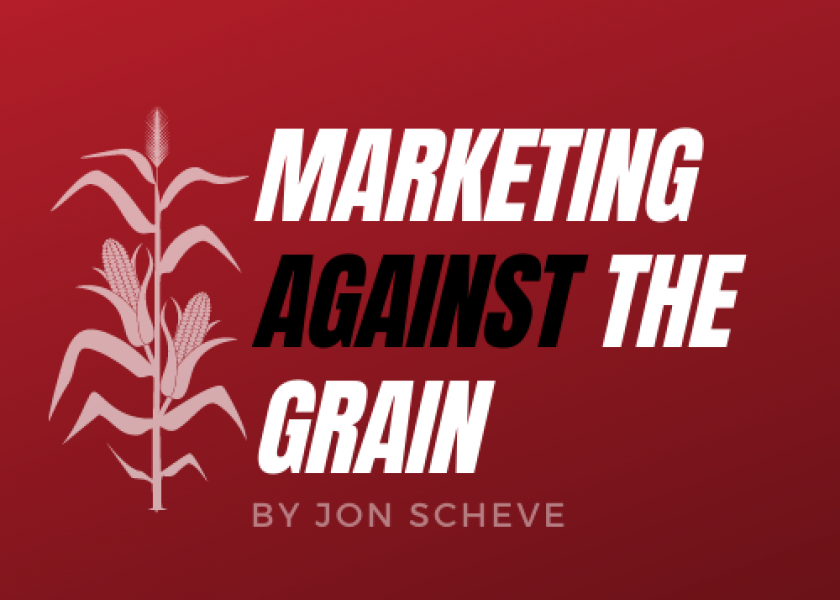Having A Risk Management Strategy Makes Big Market Drops Easier To Handle

Missed a recent article by Jon Scheve? Get it sent to you directly every week. Send a request by email: jon@superiorfeed.com
Market Commentary for 8/7/22
Ukraine Situation
Four ships loaded with wheat and corn left Ukraine last Friday. Another four loaded over the weekend. However, depending on the vessel size, it will still take another 500 to 1,000 ships to move the remaining grain still left in storage there. The deal negotiated two weeks ago set a goal of loading 3 ships per day out of Black Sea ports, with a renewal of the agreement every 120 days. While the deal has potential, logistically there is no guarantee all the old crop in storage will be moved in time to allow enough room for the new crop that will be harvested soon.
It is still uncertain how many acres will be planted there this fall and next spring. Insurance costs to move grain out of Ukraine by ship has increased by 20 times, which will be passed down to the Ukraine farmer. Plus, moving freight through a war zone costs more too, which will also be passed on to the Ukrainian farmer. This means final cash values could be below production costs for producers, and lead to fewer acres potentially being planted this fall or next spring.
Weather
For the last 5 weeks, weather predictions on Fridays showed widespread hot and dry weather; however, by Monday morning forecasts changed to more precipitation and cooler temperatures each week. While most corn has passed the crucial time when moisture is needed most, final kernel fill will be determined in the next week. It is now the crucial moisture time period for beans. Moving forward, weather can still impact corn some, but beans will be the most affected.
USDA Report
The USDA’s first look at corn yields using satellite data is Friday, and national yield predictions are wide-ranging from as low as 170 to as high as 178. Based on precipitation maps, corn yields might be closer to the 176-177 range. However, if hot and dry weather persist through mid-August, the national corn yield could pull back in the September USDA report after the first samples are officially tested and as harvest reaches I-70 giving the market more information to digest.
2022 Crop Position
As I shared in past weeks, I had 30% of my 2022 crop sold with an average futures value of $6.40 during the run up at the beginning of the year. I then rolled 20% of the 2022 sales back to 2021, leaving me 10% of 2022 sold at a $6.40 average.
Market Action
I was confident rolling these sales back in late June because on April 19th I had bought $6.80 puts for 40 cents on 70% of my anticipated 2022 production, represented by the yellow X below.
This meant I had a $6.40 guaranteed floor price on 70% of production. Including the 30% sold at $6.40 futures, I had 100% protection on my 2022 crop at $6.40. This was substantially higher than my breakeven for the year, and one of my highest guaranteed profit margins I have ever locked in at the start of planting.
After moving the 20% new crop sales back to old crop, I am left with 80% of my 2022 production protected with a guaranteed $6.40 floor. I am comfortable with the remaining 20% unprotected from the rolling of corn between crop years, because I have plenty of storage available to keep it in the bin until next summer while I wait for an opportunity.
With the price pull backs since early June, I’m glad I have a floor price on most of my 2022 crop. With hindsight, I may have wished I sold more corn at higher values. However, my strategy at the time allowed for unlimited upside potential on most of my production and a guaranteed profit if prices went down. When I placed the trades in early April there was a lot of concern around the potential planting pace in the US as well as the war in Ukraine. If you also include the risk of dry summer weather due to La Nina conditions, upside price potential at the time looked potentially record breaking.
Even today, if the average national yield decreases or the situation in Ukraine changes, prices could still push to record breaking levels.
Want to read more by Jon Scheve? Check out recent articles:
Sales At Lower Values Can Pull Averages Down Quickly
Shifting Sales Between Crop Years Nets A 90 Cent Profit
How I Managed Spreads And Basis To Add 48 Cents Profit To My Final Corn Price
Understanding How To Trade An Inverse Market Can Add Profits To A Farm Operation
It Was A Disappointing Week, A Lot Of Market Questions Remain
Jon Scheve
Superior Feed Ingredients, LLC







